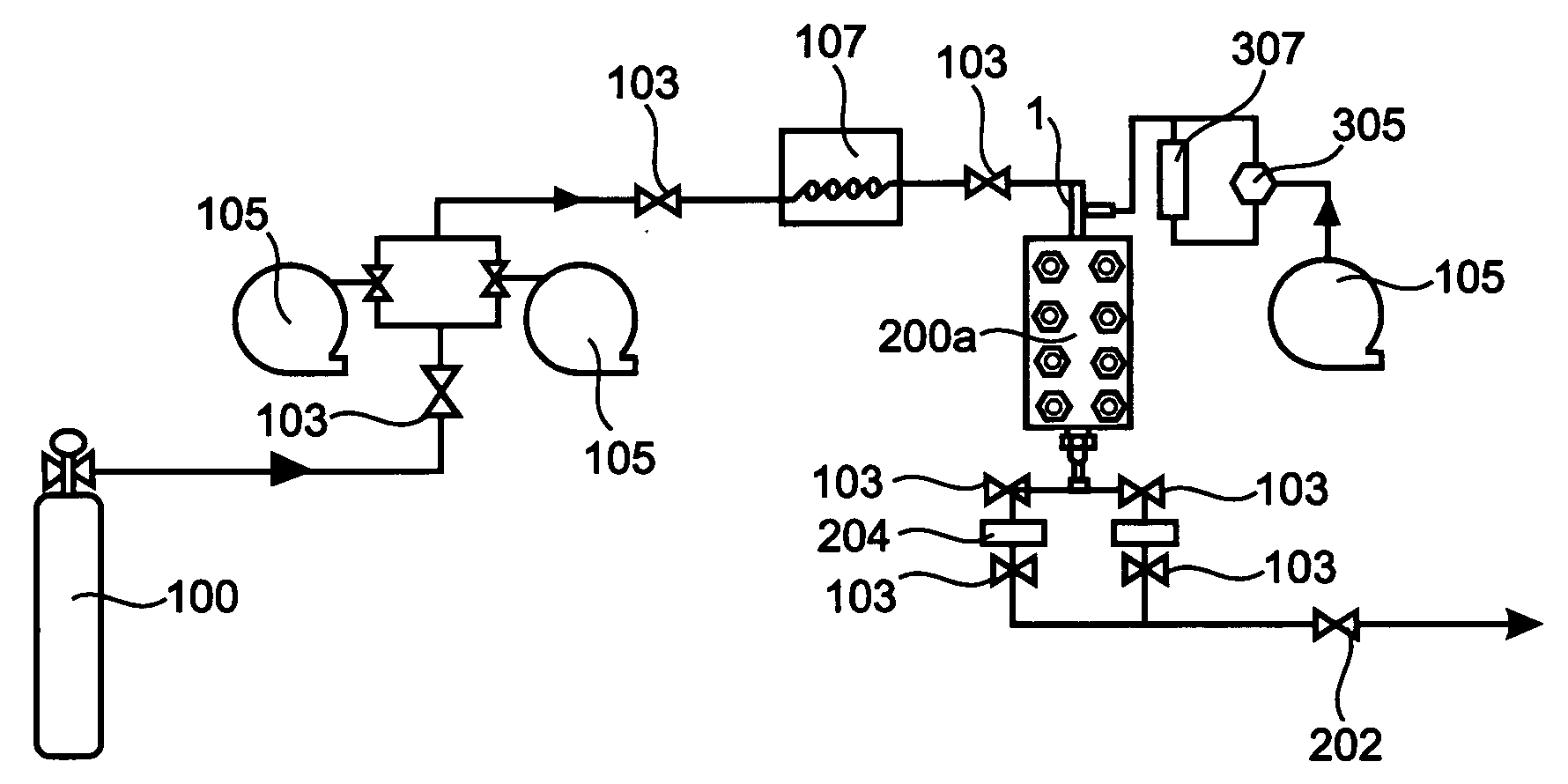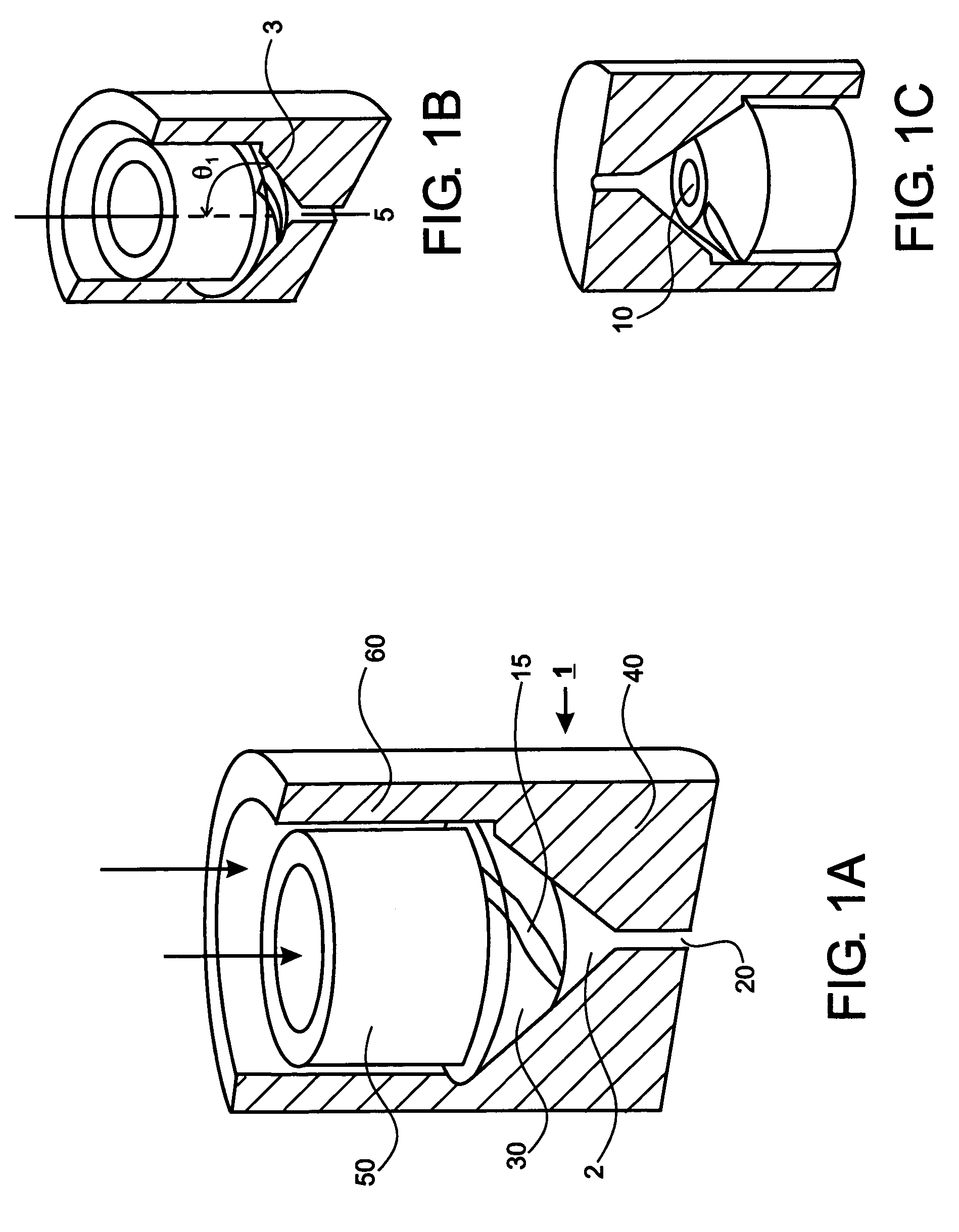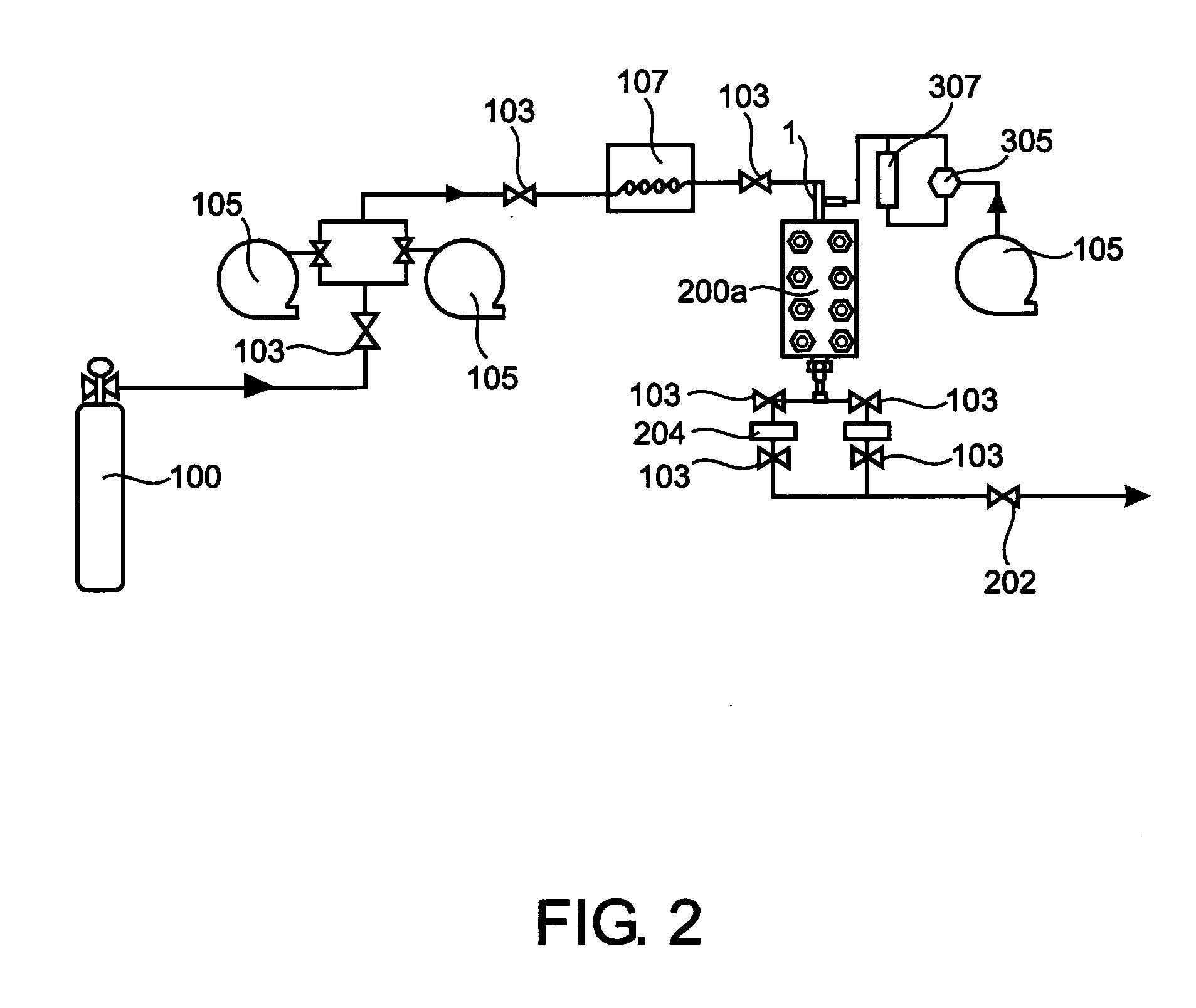Devices and methods for the production of particles
- Summary
- Abstract
- Description
- Claims
- Application Information
AI Technical Summary
Benefits of technology
Problems solved by technology
Method used
Image
Examples
examples
Formation of Poly(l-lactide Particles with the PCA Process
Poly (l-lactide) (PLA) was purchased from Birmingham Polymers, Inc. (Birmingham, Ala.) and used as received. The reported average molecular weight was 100,000. Methylene chloride (HPLC grade) and isopropyl alcohol were purchased from Fischer Scientific (Pittsburgh, Pa.), and medical grade carbon dioxide was obtained from United States Welding Inc. (Denver, Colo.).
The experimental apparatus used to perform the PCA process in a semi-continuous fashion is shown in FIG. 2. Carbon dioxide from a gas supply cylinder (100) was fed into two ISCO model 260D syringe pumps (105) that were chilled by ethylene glycol jackets to −12° C. The ISCO pumps were controlled by an ISCO series D pump controller. Liquid carbon dioxide was then reheated to 35° C. by a water bath (107) prior to entering the nozzle and then the particle formation vessel. Valves (103) are also shown. The particle formation vessel (200a) consisted of a high-pressure...
PUM
| Property | Measurement | Unit |
|---|---|---|
| Length | aaaaa | aaaaa |
| Angle | aaaaa | aaaaa |
| Diameter | aaaaa | aaaaa |
Abstract
Description
Claims
Application Information
 Login to View More
Login to View More - R&D
- Intellectual Property
- Life Sciences
- Materials
- Tech Scout
- Unparalleled Data Quality
- Higher Quality Content
- 60% Fewer Hallucinations
Browse by: Latest US Patents, China's latest patents, Technical Efficacy Thesaurus, Application Domain, Technology Topic, Popular Technical Reports.
© 2025 PatSnap. All rights reserved.Legal|Privacy policy|Modern Slavery Act Transparency Statement|Sitemap|About US| Contact US: help@patsnap.com



